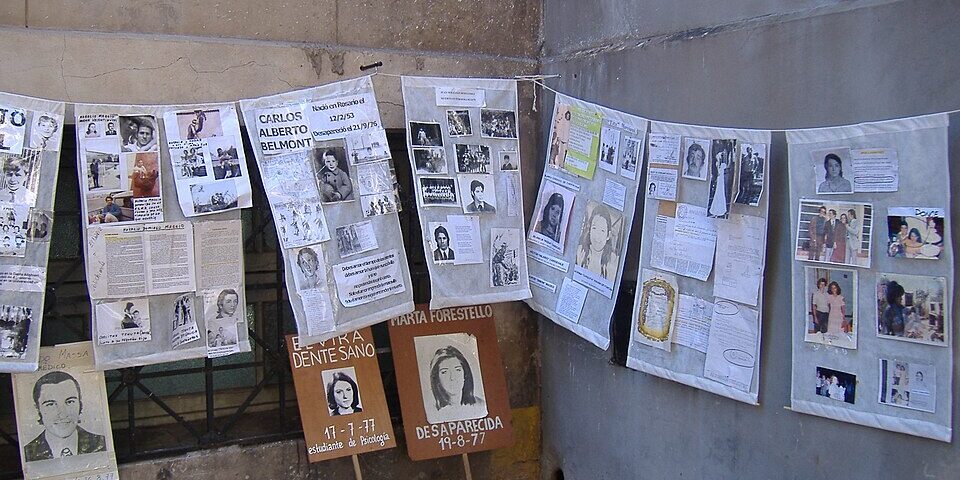Emily Fisher
If we understand violence not just as use of physical force but as an act that causes psychological harm to a person, we can understand that families of the forcibly disappeared, more often than not whom are women, are also victims of violence, violence that must be addressed.
On this day, as we focus on the ongoing effort to eliminate violence against women, it is important to recognise a form of violence that is less visible, but deeply persistent and harmful – the experience of those women who live with the agony and ambiguous loss of disappeared loved ones. In many cases, these disappearances are carried out by the very State that is meant to protect them. The resulting harm extends far beyond the moment of disappearance, permeating the daily lives of women who must live with silence and stigma, often whilst undertaking the search for their family member themselves.
Violence in its comprehensive definition, can be understood as to include violation of rights, barriers to human flourishing, structural violence, institutional injustice and social harms. It is also closely intertwined with abuses of power. Enforced disappearance is clearly illustrative of this definition as a practice that seeks to avoid direct accountability by operating in secrecy. While it often involves, in compounding violence, acts of torture or extrajudicial execution, its initial force lies in its covert nature, instilling fear, silence and obedience into families and communities. Academics posit that as international human rights frameworks and accountability mechanisms became more prominent, enforced disappearance was enacted as a strategic form of clandestine violence.
Women experience this violence in gender specific ways. They are frequently left to sustain the home, care for dependents and manage the legal and social consequences of loss. Some even face exclusion within their own families or communities. They may be blamed for what happened – judged as having failed in their perceived role as protectors or mothers. Or there may be exclusion through association, the insidious nature of enforced disappearance affecting proximity of community as an invite to targeting nearby families.
There can also be direct retaliation from the State or armed actors. Women who search for the disappeared and demand investigations have been subjected to intimidation, harassment, surveillance and even physical and sexual violence. Their efforts to reclaim their right to public life and to demand the truth sometimes challenge deeply entrenched gender hierarchies and can provoke new forms of harm.
Mass graves reveal another dimension of this violence. They are, sadly, where many of the forcibly disappeared are eventually found, but, when exhumed safely and respectfully, with identification, they can reconnect families with missing loved ones, ending the cycle of ambiguous loss. It presents a moment where States have the opportunity to end a long pattern of violence and denial. However, all too often, this initial point of discovery becomes another stage in a cycle of structural violence.
In Sri Lanka, the slow and uneven progress of excavations and the persistent lack of identifications reveal this stage of structural violence as one that disproportionately affects women. Despite laws criminalising enforced disappearance, and a plethora of truth, justice and missing persons mechanisms, families continue to wait. Delays, legal barriers, funding issues, and a lack of political will have turned potential identification into a drawn out see-saw of hope and disappointment. Members of the Association for the Relatives of the Enforced Disappearances, who in May marked 3000 consecutive days of protest, are embodiments of endurance through violence. Their struggle highlights how bureaucratic inertia in itself becomes a form of harm perpetuated by the State, extending the violence of disappearance while putting women in particularly vulnerable positions, often excluded from the norms of social life.
In contexts such as Iraq, these dynamics of violence took on different forms. The mass graves left by the Islamic State between 2013-2017, including at the Al-Khafsa sinkhole, show how non-state actors also weaponise disappearance and the dead. The deliberate filling, mining and obstruction of the site transformed it into a very visible yet completely inaccessible mark of terror, a visible marker of violence that extended long after the original attacks. For families, and particularly for women, who continue to search for the thousands of missing in Iraq and demand exhumation, this has meant living with the ongoing effects of visible harm that cannot be resolved. This denial of access to remains, whether through danger or delay becomes its own layer of violence that silences grief and constrains possibilities of familial reconnection.
Taken together the illustrative examples of Sri Lanka and Iraq, demonstrate that violence against women, perpetuated by the State is complex and far-reaching. On this International Day for the Elimination of Violence against women it is important to recognise how structural, symbolic and secondary forms of violence can disproportionately affect women, and how, in the context of enforced disappearance, tackling violence against women requires addressing and acknowledging these ongoing harms.







